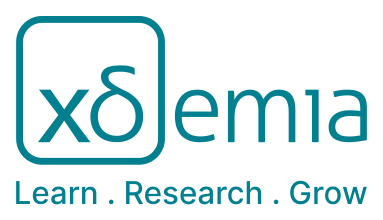MQTT - Messaging and Acknowledgment Mechanism
5 Enrollments Level : AdvancedRelevance
IoT is no longer just a trend; it is a necessity for businesses, industries, and even individual users. From building automation to
remote monitoring systems and intelligent sensor networks, connectivity is shaping the future of technology.
The challenge? Finding efficient, scalable, and secure solutions to ensure that IoT growth is sustainable and manageable. MQTT and other optimized protocols play a fundamental role in this scenario.
The Internet of Things (IoT) is revolutionizing the way devices, machines, and people interact. In a world where connectivity is increasingly demanded and resources (bandwidth, energy, hardware) are limited, efficient and scalable solutions like MQTT are becoming the backbone of the IoT industry.
Why is IoT becoming dominant?
1️. Exponential growth of connected devices: It is estimated that by 2030, there will be over 25 billion IoT devices in operation.
2️. Resource optimization: Lightweight protocols like MQTT enable efficient communication even over unstable networks or with low bandwidth.
3️. Development of Smart Cities and Industry 4.0: Automated systems for environmental monitoring, intelligent transportation,
and industrial production are already a reality.
4️. Increasing demand for automation and data analytics: IoT is at the core of artificial intelligence and machine learning, improving
decision-making processes and optimizing resource consumption.
5️. Transition towards sustainable solutions: IoT helps reduce energy waste, improve resource management, and optimize production processes.
Abstract
MQTT (Message Queuing Telemetry Transport) is a lightweight, efficient protocol designed specifically for resource-constrained devices and unreliable networks, prevalent in the IoT (Internet of Things) ecosystem. This course covers MQTT’s fundamental concepts, including its publish/subscribe architecture, detailed message types, and critical message properties such as Quality of Service (QoS)and the Last Will and Testament (LWT).
MQTT plays a crucial role in smart home and building automation due to its inherent advantages, such as minimal bandwidth usage, scalability, reliability, and real-time communication capabilities.
This three-part training series provides a comprehensive introduction to the MQTT protocol, a lightweight and efficient communication standard widely used in IoT and distributed automation systems.
Part 02 – Messaging and Acknowledgment Mechanism
This module focuses on the MQTT message types and communication flow. It details the function and structure of CONNECT, PUBLISH, SUBSCRIBE, and acknowledgment packets (e.g., CONNACK, PUBACK, SUBACK). The concept of Quality of Service (QoS) levels is introduced to explain how MQTT ensures reliable message delivery. Additional topics include retained messages, session persistence, and authentication mechanisms.
Learning Outcomes
Upon successful completion of this module, learners will be able to:
Identify the different types of MQTT control packets (e.g., CONNECT, CONNACK, PUBLISH, SUBSCRIBE, PUBACK, etc.) and de -
scribe their roles in client-broker communication.
Explain the structure of MQTT messages, including fixed header, variable header, and payload components.
Describe the lifecycle of an MQTT connection and the sequence of packet exchanges during subscription and publishing pro -
cesses.
Differentiate between the three Quality of Service (QoS) levels and discuss their implications for message reliability and duplication.
Configure retained messages and understand their purpose in maintaining state awareness across client sessions.
Analyze the purpose of session persistence (clean session vs persistent session) and its impact on message delivery.
Apply authentication and connection settings such as ClientID, username/password, keep-alive interval, and will message
setup.
Prior Knowledge
In order to successfully follow Part 02 of the MQTT course, learners should ideally have the following background:
From MQTT BB Part 01 basic knowledge:
• Understanding of the client/broker architecture
• Basic knowledge of the publish/subscribe (pub/sub) model
• General familiarity with MQTT protocol and its advantages
• Awareness of asynchronous vs synchronous communication
• Concepts of space, time, and synchronization decoupling
- Building Block Descriptors -
Technical Competencies Needed
Basic TCP/IP networking concepts
• What a TCP connection is and how it’s maintained
• Meaning of “connection state” between client and server
Familiarity with data packet structure
• Understanding headers, payloads, and flags
• Concepts like keep-alive intervals, client identifiers, and session flags
General understanding of application-level protocols
• Even conceptually: what is a CONNECT packet? What is an acknowledgment?
Keywords
- MQTTMessages
- MQTTControlPackets
- MessageFlow
- ConnectPacket
- PublishPacket
- SubscribePacket
- SessionManagement
- PersistentSession
- CleanSession
- QoS0
- QoS1
- QoS2
- ReliableMessaging
- MessageDeliveryGuarantee
- PubAck
- PubRec
- PubRel
- PubComp
- RetainedMessages
- PayloadStructure
- VariableHeader
- FixedHeader
Elements
1. About this Building Block
Descriptor
Description of the Building Block.
2. Reader
Reader
This is the readable paper or comprehensive textual content of the lecture.
3. Self-assessments
Self-assesments
BB Self-assestments for the application of the concepts explained
